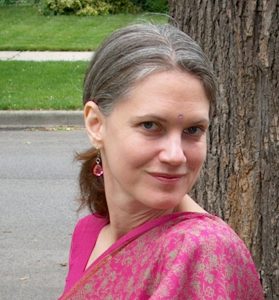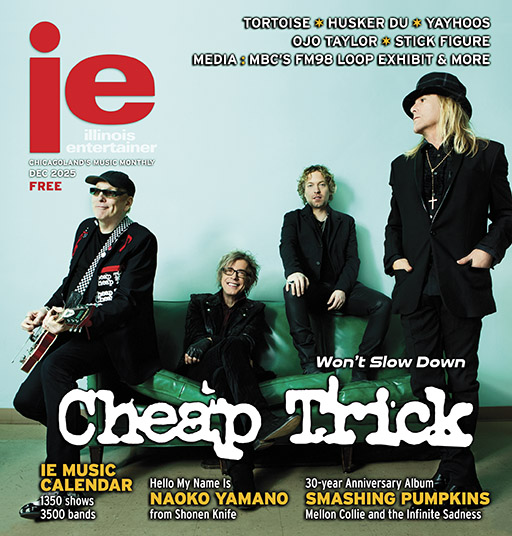Media: March 2013
My first column for this magazine 20 years ago was about a riveting radio show that featured two brilliant hosts with contrasting styles and personalities.
That show was “The Wild Room,” on WBEZ-FM (91.5) and the hosts were Gary Covino and Ira Glass. I thought it was the best radio I’d ever heard – and said as much in my column. (Full disclosure: After the column ran, I was Covino’s guest on the show.)
“In a lot of ways that program was what I always thought more radio should be,” says Covino, now an independent radio producer and consultant based in Massachusetts. “The notion being that it had no set format. It could sound wildly different from one episode to the next. One week it could sound like some intensely prepared documentary. The next week it could be a free-form discussion with phone calls and bits of tape flying around in a seemingly very random order. It could be serious or funny. There could be many voices, or it could be a monologue. There were no set times for any of the segments; there was no clock, except to go on the air at the top of the hour and end at the top of the next hour. The space was as expansive as possible, to handle as wide a range of topics as possible, with as many different attitudes and emotions as possible.”
“I remember what a real free-form show it was,” says Glass, architect of the public radio program “This American Life.” “One out of four was great, one out of four was awful, two were O.K. Torey Malatia put us on late Friday night for good reason; it was not always so awesome. You really couldn’t tell what would happen next. Gary was such a great radio performer, but far braver than I was and he’d push us places where I’d feel like, ‘Whoa, we’re going here?’
“‘The Wild Room’ definitely was a place I was trying out ideas to see how they’d work and where I was retraining myself in how to perform on the radio. To be looser, more like my real talking voice versus that stiff NPR voice,” he continues. “And there’s a kind of story I did a lot on ‘The Wild Room’ – where I’d interview one person, edit the tape, and string it together on the air with music – that we do on ‘This American Life.’ But ‘The Wild Room’ was truly a free-form show. The chaos of it was kind of the point. ‘This American Life’ – everything’s edited and re-edited and carefully mixed and orchestrated. It’s a very different form.”
The show ran from 1990 to 1996 in the days before the widespread use of the Internet, when an appreciative audience would have pounced on it.
In those pre-Internet days, I checked facts by making calls, reading books and newspapers, and sending faxes. I wrote my first columns on a borrowed Tandy 1000, printed it out on a dot-matrix machine, got on my bike and rode it over to former editor Michael C. Harris‘ house.
Over the years I interviewed a who’s who of radio personalities, including Connie Szerszen, Ken Nordine, Allan Stagg, Karen Hand, Bobby Skafish, Johnny Mars, Major Tom Johnson, Steve and Garry, Mancow, Karl T. Wright, Richard Steele, Chuck Mertz, Steve Cushing, and Howard Stern (who ended up interviewing me – on air). I wrote for everyone from Billboard to the Sun-Times, with regular stints at the Reader and Newcity.
Many of those publications have folded or contracted; former colleagues now tend bar, train dogs, and plan craft parties. A few exceptions are former Reader editor Pat Arden, an award-winning senior reporter at Metro New York, and former Sun-Times media critic Robert Feder, whose Time Out Chicago blog masterfully combines the best of old and new media with its mix of solid beat reporting, enterprise journalism, a sharp wit, and reader commentary.
The rest of the media landscape also suffered over the past two decades. Radio became consolidated in the wake of the Telecommunications Act of 1996. Add competition from Internet and satellite radio and a new ratings system, and famous names, innovation, and local flavor went out of favor.
“Things keep getting more and more formatted and more and more predictable in radio and there’s the notion that well, that’s what people really want,” Covino says. “But I believe that people want unpredictability and spontaneity as much as they want predictability. The unpredictable has to be good, though. The people doing the show have to be very talented. And the audience will really respond to that. But they hardly ever get it. [‘The Wild Room’] was an example of people actually getting it – if they happened to be near the radio when it was on – and they were responding in a very positive way.”
The one constant through all this change was IE, which never sold out its readers and gave me ample opportunity to tilt against corporate media windmills.
But now it’s time for me to leave and pursue yoga full-time. Starting next month, this column will be in the capable hands of former radio producer, publisher, author, and longtime media watcher Rick Kaempfer.
— Cara Jepsen












